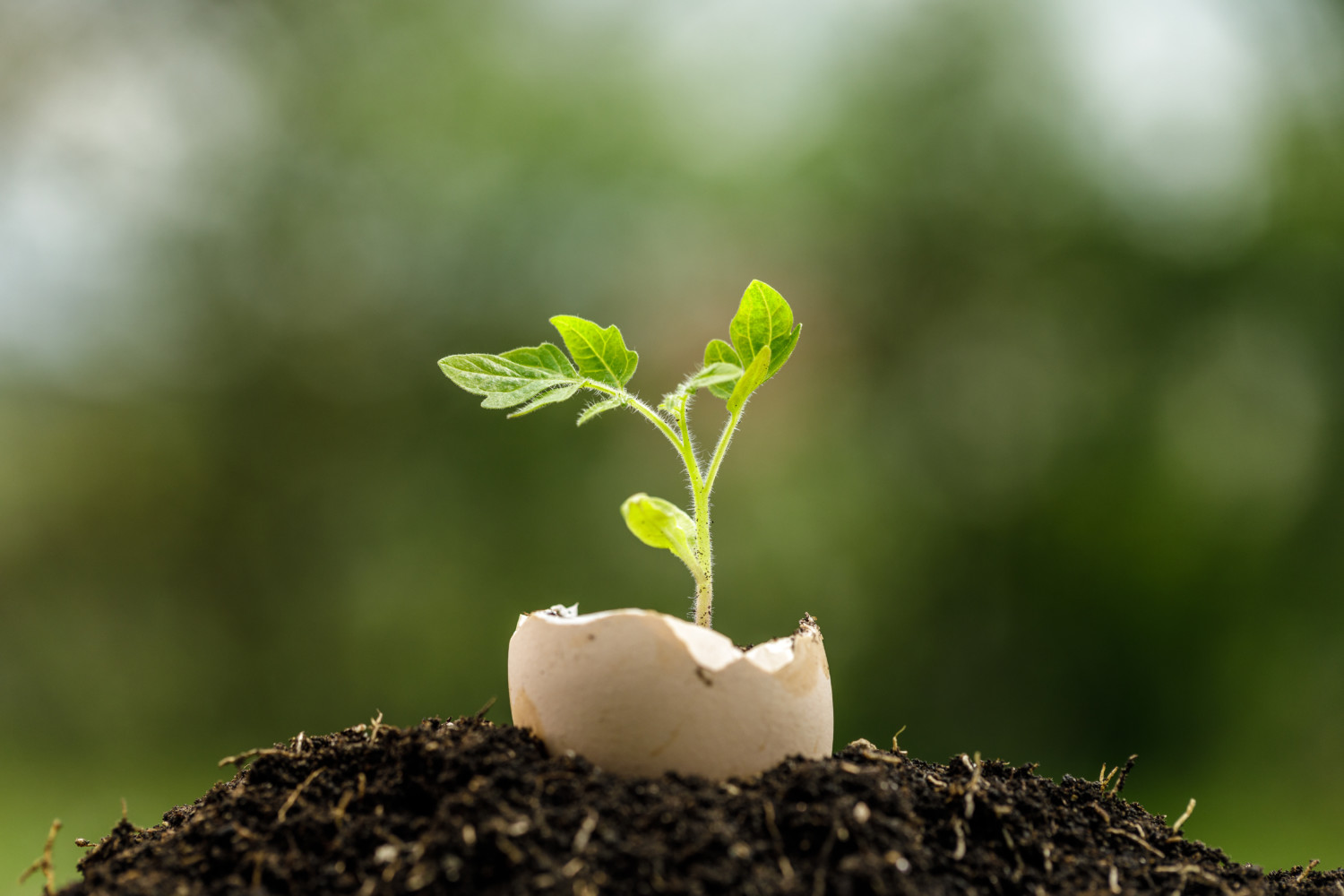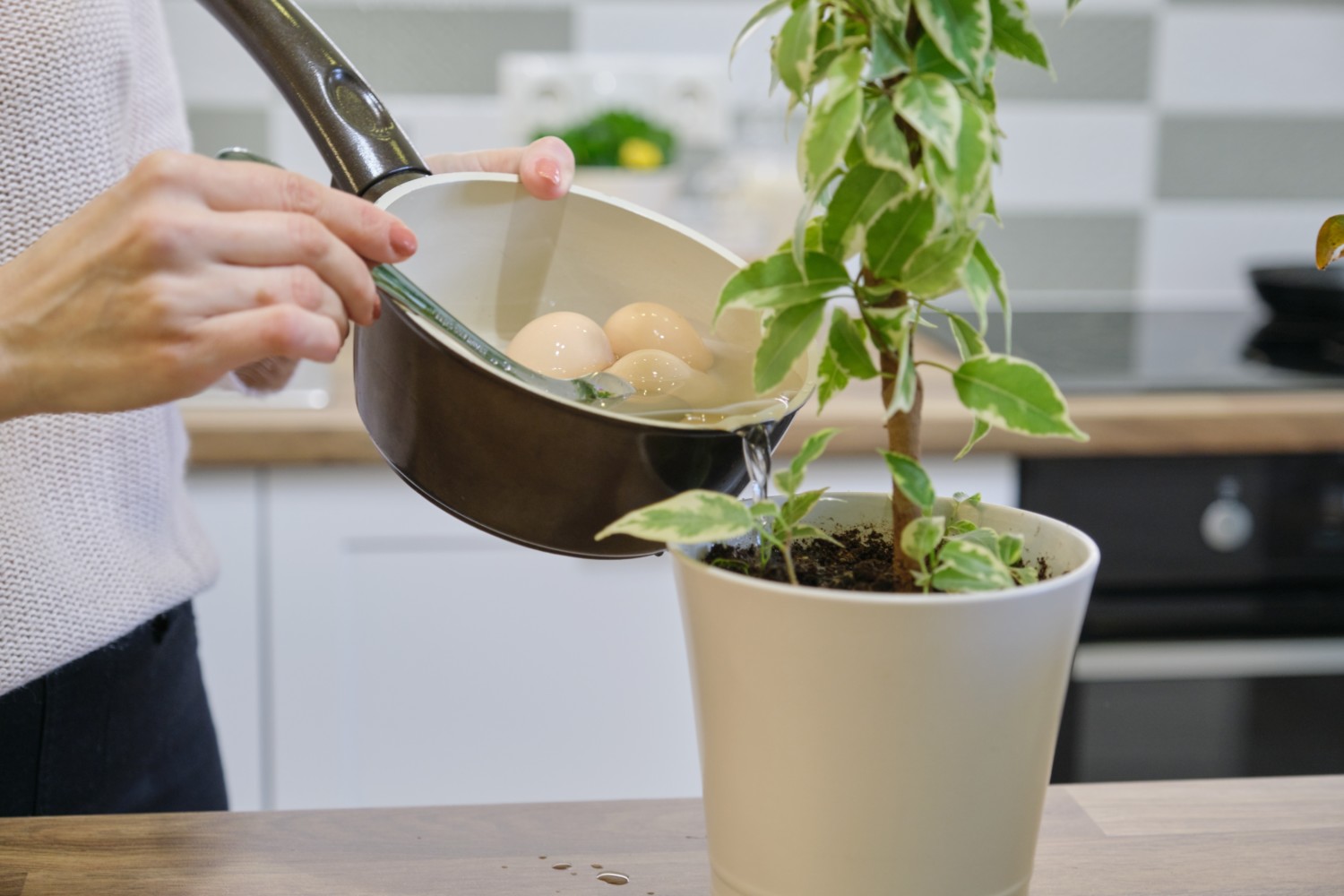The products and services mentioned below were selected independent of sales and advertising. However, Simplemost may receive a small commission from the purchase of any products or services through an affiliate link to the retailer's website.
During a childhood Easter egg hunt in our cousins’ yard years ago, we kids didn’t end up finding quite all of the real eggs the adults had hidden. Of course, no one knew that until the smell of sulfur began wafting from the bushes a few days later.
That family story still makes us laugh. However, it turns out that leaving a few eggs to decompose in the ground might not have been a bad idea, beyond the lingering rotten egg smell in the yard.
That’s because eggs in plants act as good fertilizers.
As a much-shared Facebook post from Waddell Woodworking LLC points out, when you put a whole, raw egg in a planter along with your plant and cover it with soil, your egg “slowly decomposes and becomes natural fertilizer under the soil!”
Why Put Eggs In Plants?
The shell of an egg is made almost entirely of calcium carbonate. As Flourishing Plants highlights, while calcium is a “secondary” nutrient for plants — primary nutrients being nitrogen, phosphorus, potassium and others — you definitely want to make sure your plant is getting enough calcium. Eggs also have smaller amounts of magnesium, which is a central component in chlorophyll, and phosphorus, which is essential for cell division.
“Calcium is used by plants to strengthen stems and leaves while providing structural support for cell walls,” Flourishing Plants says, much like calcium strengthens human bones. “Apart from cell development, calcium is needed in plants to produce a response in times of stress by sending stress signals throughout the plant via calcium ions Ca+.”
Tomato plants that may develop blossom-end rot could be helped by an egg in your plant soil because of the extra calcium.

How To Place Eggs In Plants
First, you’ll want to check your soil’s pH with a home meter to make sure it doesn’t have too much nitrogen or too low of a pH, which will keep the egg’s calcium content from being properly absorbed.
Typically, a soil pH around 6-7 is best, with a slightly acidic pH.
You’ll also want to make sure you bury your eggs in the ground deep enough so any smell from the decomposing eggs can’t waft above ground. You also don’t want to attract rodents wanting to dig them up.
So if you’re worried about rotting egg smells, you could bury only crushed eggshells and not whole eggs in your plants. Another option would be to grow seedlings in halved eggshells and then plan the egg “pot” in the ground when the seedlings are ready to be transplanted. The eggshells will decompose in the soil over time.

Other Ways of Using Eggs In Plants
You might have heard that eggshells are good in your compost if you make your own. Avoid putting whole eggs in it, though, because of the smell and potential to attract animals when used outside on soil.
The smaller you can crush up your eggshells in your compost the better. An Alabama Cooperative Extension study comparing using eggshells versus using pure calcium or agricultural lime showed that hand-crushed eggshells didn’t work as well eggshells ground into a powder.
You can also water your plants with cooled water used to boil eggs. It’s another good way to get residual calcium into your plants while also reusing a source of water.

“Another trick is to boil 10 to 20 eggshells and then let the concoction sit overnight,” the University of Illinois-Urbana Champaign Extension noted. “The next day, strain the eggshells out of the water, and you have liquid calcium solution.”
You can get 4 milligrams of calcium per eggshell with this method. Two cups of the egg-water solution on plants are enough to provide the soil with calcium supplementation for two weeks.
Eggshell water is slightly more effective if you’ve boiled the eggs or eggshells in rainwater or distilled water.
Crushed eggshells are also a nice source of calcium for the wild birds in your yard. However, if you’ve heard that eggshells can get rid of slugs and snails near your plants, you might find mixed results in their actual effectiveness.
So if you’ve got a lot of hard-boiled eggs leftover from Easter, peel the shells and use those for your plants and use the actual egg in recipes rather than in the ground.
Have you ever thought to use eggs in your plants?
This story originally appeared on Simplemost. Checkout Simplemost for additional stories.


